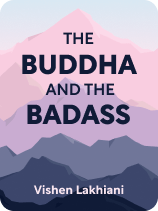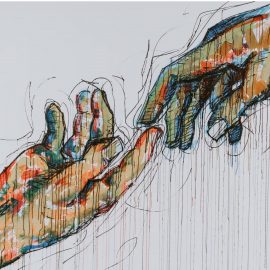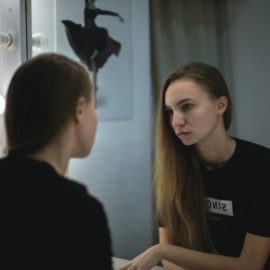

This article is an excerpt from the Shortform book guide to "The Buddha and the Badass" by Vishen Lakhiani. Shortform has the world's best summaries and analyses of books you should be reading.
Like this article? Sign up for a free trial here.
What is the ideal life for you? How do you decide what you want your life to look like?
The ideal life is different for everyone, so it’s your job to figure out what it looks like. If you’re having trouble picturing it, follow these steps from Vishen Lakhiani’s book The Buddha and the Badass.
Let’s dive deep into the three steps Lakhiani recommends.
Creating Your Ideal Life
Lakhiani writes that to realize the ideal life based on your identity, values, and purpose, you must disrupt how you think about yourself to establish new, constructive patterns of thought. He provides a three-step process for doing this.
Step 1: Describe your ideal day if you were exactly the person you wanted to be. Consider what you’d do in the mornings, what you’d look like, what your work would look like, who your friends are, and so on. Be as detailed as possible.
(Shortform note: What’s the distinction between visualizing your ideal day, as Lakhiani recommends, and fantasizing about it? You visualize when you believe an event can happen in the future, and you fantasize when you don’t believe that event can actually happen. Steer clear of fantasies in this exercise, as they won’t help you achieve a realistic future life.)
Step 2: Ask what sort of person you’d have to become to live this ideal day. Reflect on four dimensions and secondary factors of this person:
- Well-being: Describe your physical health, mental health, and emotional health. Do you feel energetic? What emotions do you feel over the course of the day?
- Creativity: How well can you access a state of concentration and enjoyment when working? How easy is it for you to focus on your goals? How clearly have you defined your purpose?
- Material well-being and life control: Are you financially comfortable? Can you handle your work and personal projects? Do solutions to problems come easily to you?
- Relationships: Do you have mutually beneficial relationships with friends and co-workers? Are there people who care about you? Can you be authentically yourself?
(Shortform note: This step seems as if it would elicit the same answers from all humans. For instance, when asked to think about future physical health, everyone would say they want to be in good health. No one wants to be in poor or average health. Similarly, everyone wants to be able to focus well, be financially well-off, and have good relationships. The key to making this a valuable exercise step is perhaps to consider each category more globally and neutrally, asking yourself to simply describe your well-being, creative life, material well-being, and relationships. This makes room for more individualized reflection and avoids simple binary answers.)
Step 3: Now, assume the identity of this person by asking yourself questions as if you already possess the above-listed traits. For example, if you wrote in step 2 that the ideal version of yourself has many caring friends, you might ask yourself: “Why do I have such deep, loving relationships?” Asking such questions forces your subconscious to answer them—this is an automatic reaction. In this example, your subconscious might answer: “Because I’m a compassionate, thoughtful friend and invest heavily into my friendships.”
When your subconscious answers such questions, you’ll notice more opportunities to live out those answers. For instance, you might meet someone new and have the chance to become a compassionate, thoughtful friend to them. Lakhiani admits he’s not sure how this happens—if the Universe presents you with opportunities or if your brain simply becomes more attuned to such opportunities—but he’s confident that either way, this process works.
For each of the dimensions you listed in step two, write five to 10 such “why” questions.
| Asking the Universe to Give Back: Comparing Lakhiani’s Approach to The Secret The third step of this exercise contains echoes of ideas in Rhonda Byrne’s The Secret, in which she discusses how to use the “Law of Attraction” to invite good things into your life. Both approaches place heavy emphasis on asking as a step toward self-actualization, but they differ in the specifics of where to direct your questions. In The Secret, you ask the Universe for what you want (“I want to be able to travel half the year”) and in Lakhiani’s exercise, you ask yourself questions (“Why can I travel half the year?”). For Byrne then, you can place complete faith in the Universe and its ability to respond to your request. Conversely, for Lakhiani, you place faith in yourself: Your subconscious must provide your own response to your question. However, once this is done, the two approaches may converge. Byrne believes the Universe conspires to fulfill your request, and Lakhiani believes this might be the case, too (though he writes that he’s not sure if it’s the Universe intervening or your brain becoming more attuned to opportunities). In essence, these two approaches are similar, save that Lakhiani has an intermediate stage in which you force yourself to explain how and why you’ll achieve your ideal life. |

———End of Preview———
Like what you just read? Read the rest of the world's best book summary and analysis of Vishen Lakhiani's "The Buddha and the Badass" at Shortform.
Here's what you'll find in our full The Buddha and the Badass summary:
- Why you don't need to work long, grueling hours to be successful
- How to transform your workplace from mundane to fun
- How to merge spiritual enlightenment with disruption






